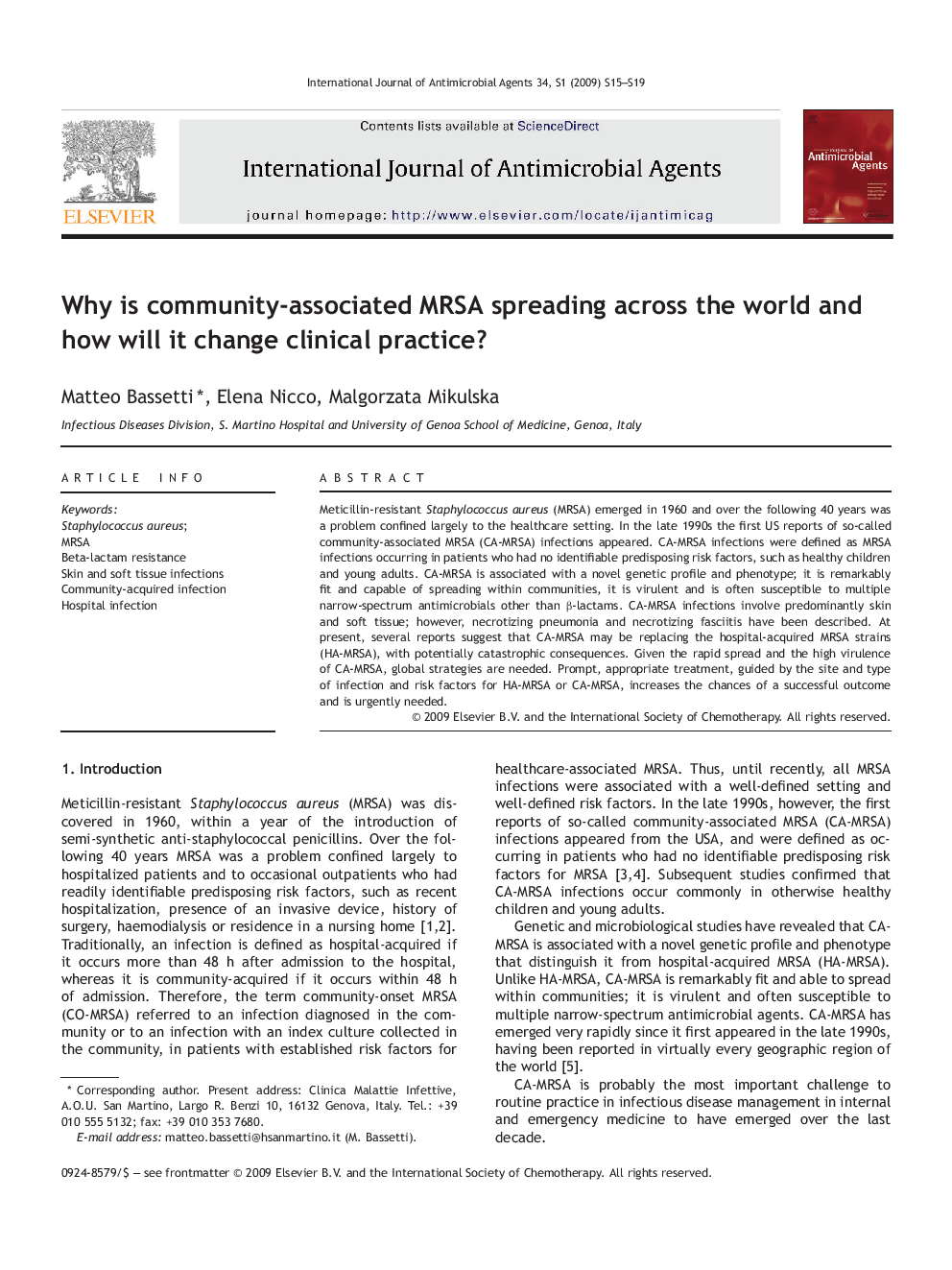| Article ID | Journal | Published Year | Pages | File Type |
|---|---|---|---|---|
| 3360107 | International Journal of Antimicrobial Agents | 2009 | 5 Pages |
Meticillin-resistant Staphylococcus aureus (MRSA) emerged in 1960 and over the following 40 years was a problem confined largely to the healthcare setting. In the late 1990s the first US reports of so-called community-associated MRSA (CA-MRSA) infections appeared. CA-MRSA infections were defined as MRSA infections occurring in patients who had no identifiable predisposing risk factors, such as healthy children and young adults. CA-MRSA is associated with a novel genetic profile and phenotype; it is remarkably fit and capable of spreading within communities, it is virulent and is often susceptible to multiple narrow-spectrum antimicrobials other than β-lactams. CA-MRSA infections involve predominantly skin and soft tissue; however, necrotizing pneumonia and necrotizing fasciitis have been described. At present, several reports suggest that CA-MRSA may be replacing the hospital-acquired MRSA strains (HA-MRSA), with potentially catastrophic consequences. Given the rapid spread and the high virulence of CA-MRSA, global strategies are needed. Prompt, appropriate treatment, guided by the site and type of infection and risk factors for HA-MRSA or CA-MRSA, increases the chances of a successful outcome and is urgently needed.
